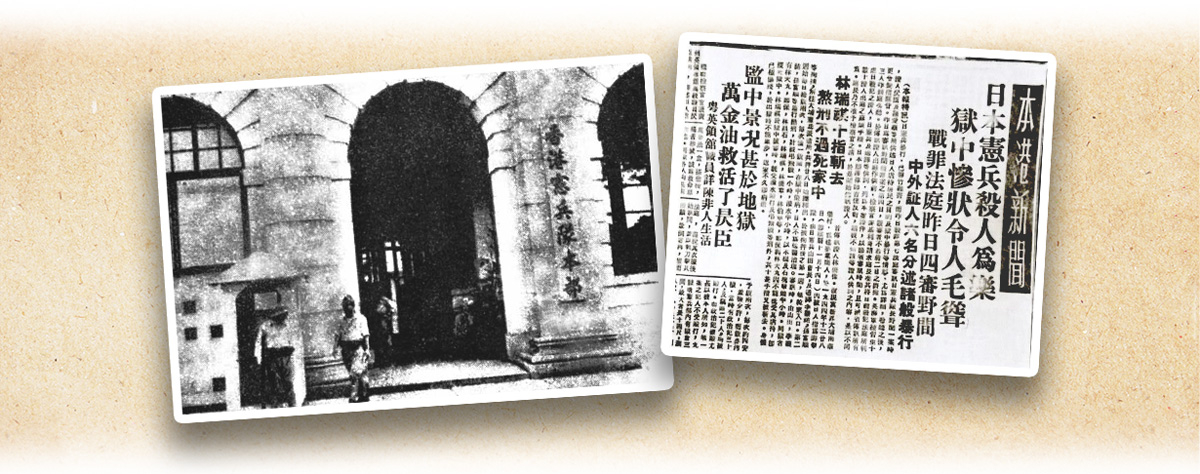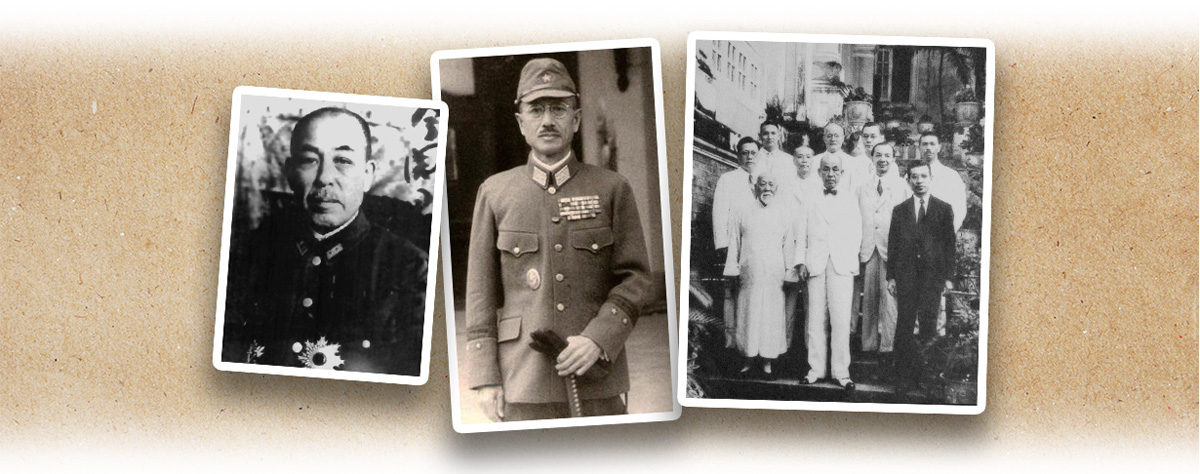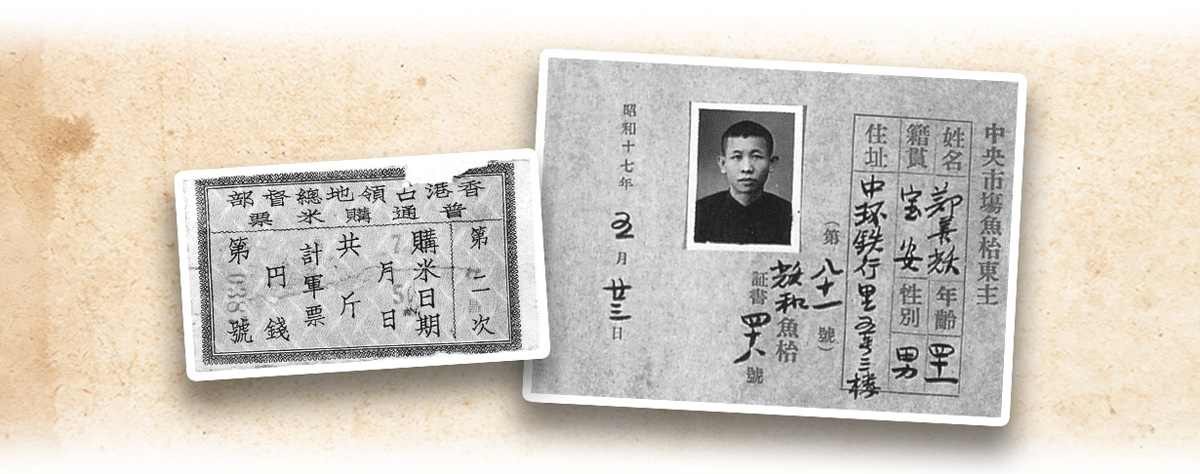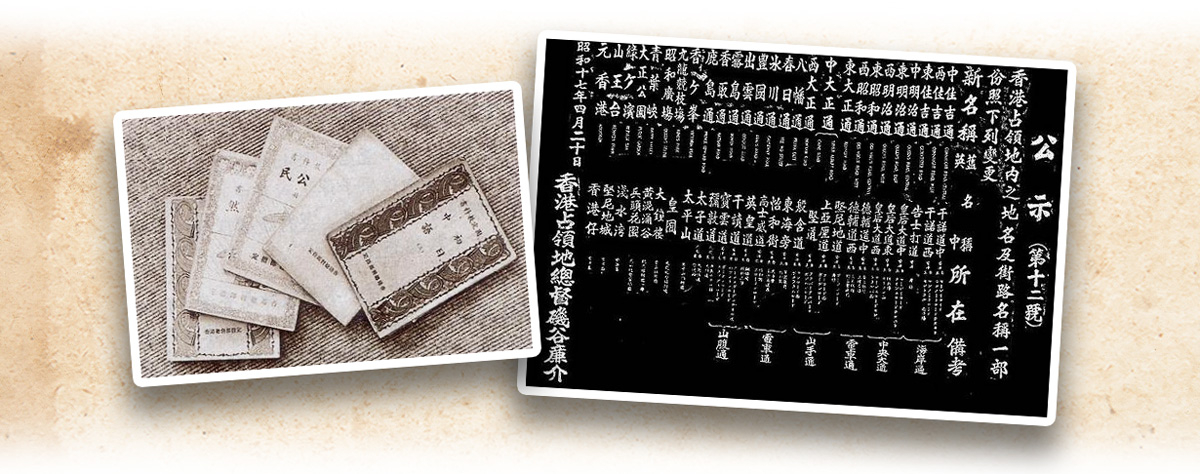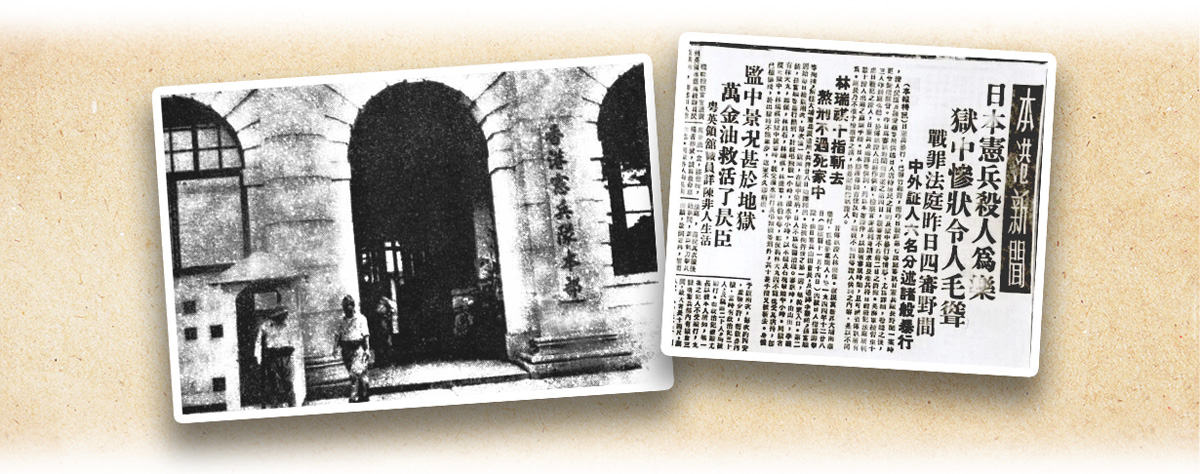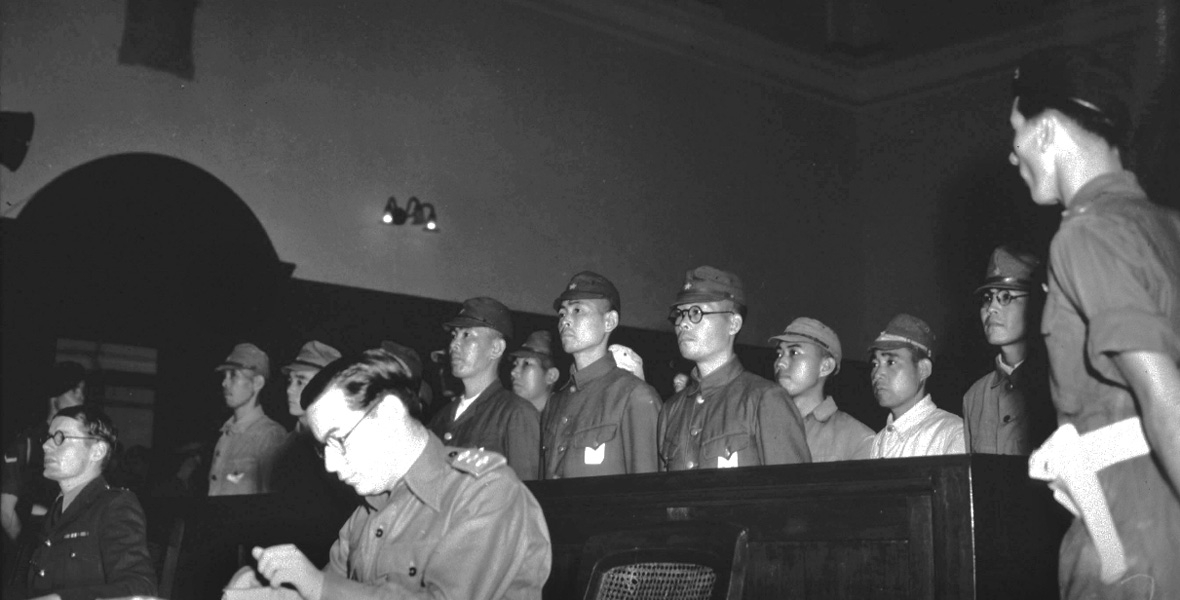From the British surrender on 25 December 1941 to the Japanese surrender on 15 August 1945, Hong Kong underwent the dark age of Japanese occupation for three years and eight months.
After the Japanese forces captured Hong Kong, they plundered Hong Kong’s economic resources and the property of Hong Kong people on a large scale. The Hong Kong Occupied Territory Government (the occupation government) issued a large number of military currency and drained common people’s savings by forcing them to exchange Hong Kong dollars to military currency.
During the Japanese rule, the occupation government implemented food rationing as food shortage was severe in Hong Kong. However, the Japanese abolished rice rationing on 15 April 1944 and only allowed those served the occupation government get the rice. As a result, the price of rice on the black market rocketed. Common people could only eat coarse grains or even bark to survive. During the three years and eight months of Japanese occupation, most Hong Kong people starved. Countless people died of starvation.
The Kempeitai (Japanese military police) often abused Hong Kong people using water torture, burning, electric shocks, beatings, body hanging, kneeling torture, whipping, beheading, etc. The Japanese forces often carried out large-scale raids in the New Territories to eliminate all anti-Japanese guerillas, during which many villagers were arrested and tortured for information about the guerrillas. A multitude of innocent civilians died because of the Japanese atrocities.
|
|
What long-term impact did the Japanese occupation have on the natural environment of Hong Kong? |
|
|
See answer below. |
A Japanese sentry overlooking the dwellings.
Left: the Hong Kong Occupied Territory Government was formally established on 20 February 1942 and Isogai Rensuke became its first Governor-General; Middle: Tanaka Hisakazu took over the Governor-General’s Office on 1 February 1945; Right: a group photo of Isogai (middle in the front row) and some upper-class Chinese in Hong Kong. During the Japanese occupation, Japan bribed some upper-class Chinese to stabilise its rule.
The Japanese took over important enterprises and assets such as banks after occupying Hong Kong. Left: in December 1941, the British-owned Chartered Bank of India, Australia and China was occupied by the Japanese. A notice which said “Occupied by Imperial Japanese Navy” was posted; Right: the junction of Des Voeux Road Central and Douglas Street in Central during Japanese occupation. Foreign staff members of HSBC are leaving under the Japanese escort.
The Japanese military currency issued in Hong Kong became a tool for looting common people.
The occupation government issued a large number of military currency and forced common people to exchange Hong Kong dollars to them. The exchange rate was arbitrarily determined by the occupation government. At first, people could exchange 2 Hong Kong dollars to 1 military currency. In July 1942, the rate became 4 to 1. On 30 June 1943, the occupation government officially announced the ban of Hong Kong dollars. Only military currency were allowed to use. On the eve of Japan’s defeat, the occupation government already issued a total of two billion military currency. It was like looting Hong Kong people. The military currency became worthless after Japan surrendered and it refused to compensate Hong Kong people who suffered heavy losses due to forced exchange of military currency after the war. Some Hong Kong people continued to fight for compensation over decades, but their effort was in vain.
During the Japanese occupation, food trading was strictly restricted. Left: a grain purchase ticket issued by the occupation government; Right: a fish sale permit issued by the occupation government.
The occupation government implemented food rationing. Since rice was the staple food, its control was particularly strict. Initially, each civilian could only get four tael (兩, roughly 0.3 kg) of rice per day. Later, it was increased to six tael four mace (錢, roughly 0.03 kg). At that time, people commonly used “six tael and four mace” to refer to rice rationing. Countless people died of starvation during the Japanese occupation.
During the Japanese occupation, the Japanese plundered Hong Kong’s metal products and forestry as these were considered important resources. Left: the bronze statue of Queen Victoria was taken down and shipped off to Japan to be melted down for use; Middle: the bronze statue of Hong Kong Governor Kennedy before it was melted down for use; Right: the five-finger camphor at Lai Chi Wo. The Japanese tried to cut down the tree. It is said that only a “finger” of the tree was cut off because of the protection of villagers. There are four “fingers” remain.
Some of the famous metal installations shipped off to Japan during the Japanese occupation included the two bronze lions outside the HSBC Building, the bronze statue of Queen Victoria originally located at the Statue Square in Central, and the bronze statue of Hong Kong Governor Kennedy at Hong Kong Botanical Gardens (now Hong Kong Zoological and Botanical Gardens). When Japan surrendered, the former items survived intact and were later returned to Hong Kong, but the bronze statue of Governor Kennedy was melted down. The Japanese forces carried out deforestation on a large scale, which led to soil erosion and ecological destruction in many places in Hong Kong.
The occupation government implemented Japanisation in Hong Kong. Left: some textbooks in Hong Kong during the Japanese occupation; Right: some of the street names in Hong Kong were changed to Japanese during the Japanese occupation.
Education in Hong Kong was severely interrupted during the Japanese occupation. Nearly all children at school age were out of school as most schools were closed. In the few remaining schools, the occupation government provided Japanised education where students were forced to learn Japanese and were forbidden to use English. Some major street names in Kowloon and on Hong Kong Island were changed to Japanese. For example, Queen’s Road Central was renamed “Nakameiji-dori”.
During the Japanese occupation, the Kempeitai were known for their cruelty. Left: the headquarters of the Kempeitai during the Japanese occupation; Right: a news report about how the Kempeitai abused Hong Kong people. It was published in a Hong Kong newspaper in 1946.
Elderly people who survived the three years and eight months of Japanese occupation talking about the Japanese atrocities in Hong Kong. They are the witnesses to this history of dark age.
Left: Yip Wai-lei (葉維里), a veteran of the East River Column, talking about how the Japanese forces detained and tortured villagers in Lin Ma Hang 70 years ago. The photo was taken at the former site of the Kempeitai in Sha Tau Kok in 2013.
Middle: 81-year-old Village Chief Tang Siu-nam (鄧小南, left) talking about how the Kempeitai in Kowloon tortured villagers in the church to find out about the anti-Japanese guerrillas’ activities in September 1944. Tang witnessed the incident. He recalled that villager Tang Tak-on (鄧德安) was burnt to death. His father Tang Fok (鄧福), villager Tang Mou-fui (鄧戊奎), and others were suspended, beaten and burnt. They were seriously injured. The photo was taken at Rosary Mission Centre in Wong Mo Ying, Sai Kung, on 12 October 2014.
Right: But Shun-hoi (畢順海, middle) sharing an unforgettable experience with visitors at King’s Park Recreation Ground in 2011. The 7-year-old But saw Japanese soldiers beheading two Chinese at the recreation ground in 1944 summer.
Between 1946 and 1948, Japanese war criminals were tried in the Military Court for the Trial of War Criminals in Hong Kong. 21 people were sentenced to death, including Noma Kennosuke, the Head of the Kempeitai. He was known as the “King of Murderers in Hong Kong”.
When the court in Hong Kong tried Japanese war criminals, Noma Kennosuke’s case was listed as No. 7. He was charged with committing a war crime. His charge is as follows: “In that, the accused, at Hong Kong between the 25th December 1941 and the 18th January 1945, as head of the Kempeitai and as such responsible for public order, the control of Kempei personnel and for the management of places of detention at Hong Kong aforesaid, was, in violation of the law of usages of war, concerned in the illtreatment of civilian residents, as a result of which numbers of them died or were unlawfully killed by members of the Japanese Forces, and many others underwent physical suffering.” Noma was sentenced to a death penalty on 25 December 1946. He was hanged on 27 May 1947 at Stanley Prison.
During the Japanese occupation, the Japanese committed countless war crimes. The following are some examples:
Killing innocent people during census: The occupation government held its first census in September 1942, during which over 2,000 people were killed or went missing after they were arrested by the Japanese.
Forced labour on Hainan Island (海南島): During the Japanese occupation, about 20,000 Hong Kong people and 20,000 people from the Chinese mainland were involuntarily taken to Hainan Island to work for the Japanese. Many people died from overwork, abuse or starvation. Only about 5,000 of the 40,000 Chinese workers on Hainan Island survived.
Arbitrary arrests and torture: During the Japanese occupation, prisoners of war and common people were often tortured by the Japanese forces. Different ways of torturing included forcing them to drink lots of water and then stepping on their stomachs. Some were electrocuted and beaten with their bodies suspended and hands tied.
Silver Mine Bay Massacre: After Japan announced its unconditional surrender on 15 August 1945, the Japanese forces searched for anti-Japanese guerrillas in Silver Mine Bay and other places on Lantau Island. During the incident, 300 villagers and village chiefs were arrested, 11 villagers were killed and many were injured, and numerous houses were burnt.
The Hong Kong’s War Crimes Trials Collection HKU Libraries Digital Initiatives provides more details on the war crimes committed by the Japanese in Hong Kong. The database was launched on 25 December 2010. The link is as follows:
|
|
What long-term impact did the Japanese occupation have on the natural environment of Hong Kong? |
|
|
A lot of people know that there was a huge loss of life and property during the Japanese occupation of Hong Kong. However, its impact on the natural environment of Hong Kong was seldom talked about. Before the war, most places in Hong Kong were rural areas with abundant forestry resources. They were considered important by the Japanese for such as making fuel and manufacturing during the war. A lot of hills were eroded by rain and became barren when the Japanese cut trees that led to soil erosion during its occupation. A number of primary forests in Hong Kong were deforested. This struck the native flora and fauna and the ecology hard. The British Hong Kong authorities carried out a large-scale reforestation plan to restore Hong Kong’s vegetation as soon as possible after the war. However, they did not consider much about such as preserving native plants and biodiversity when having too many issues to handle. In addition, the barren land caused by soil erosion made it difficult for common plants to grow, so the authorities introduced a few exotic tree species with strong vitality and fast growth speed. For example, many Taiwan Acacia were planted in Hong Kong for its easy seedlings and fast growth speed. The situation did not improve until decades after the war. Stepping into the 1980s, the authorities gradually introduced more local tree species. The strategy of mixed cropping was adopted instead of monoculture. This helped produce fruits and nectar for native wildlife. The Agriculture, Fisheries and Conservation Department launched the Country Park Plantation Enrichment Scheme (PEP) in 2009. Under the scheme, relatively short-lived exotic tree species (the average lifespan of Taiwan Acacia is 50 to 60 years) would be removed to make room for suitable native seedlings. The main objective of PEP is to increase biodiversity and ecological value of exotic plantations. Between 2009 and 2019, a total of 90 hectares of exotic plantations were engaged under PEP. About 100,000 seedlings comprising near 80 native species were in-planted in PEP sites. Major native species planted include Hong Kong Gordonia (Polyspora axilllaris), Machilus (Machilus spp.), Rhodoleia (Rhodoleia championii) and Sweet Gum (Liquidambar formosana Hance), etc. When native seedlings reach maturity, they are able to provide resources such as fruits and nectar for native wildlife. They also provide suitable shelter for native wildlife and enhance the biodiversity of the sites. The ecology of Hong Kong was severely damaged during the Japanese occupation. Decades of hard work by generations of Hong Kong people was required to restore the city’s natural environment after the war. This is a link that should not be ignored in the history of the Japanese occupation of Hong Kong. |




